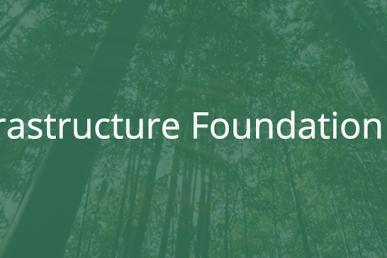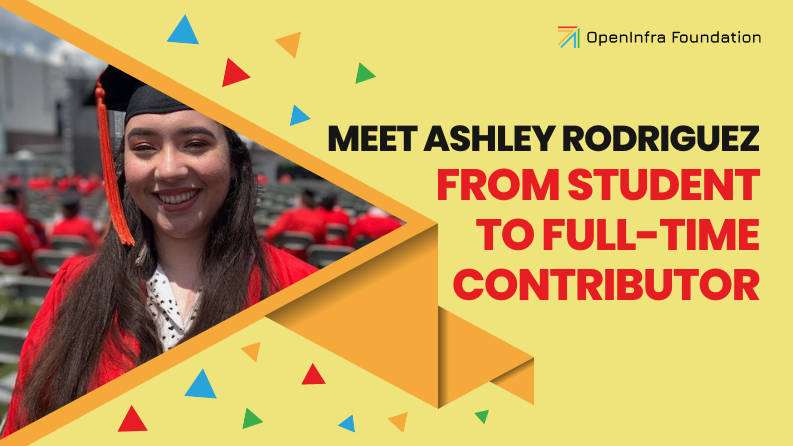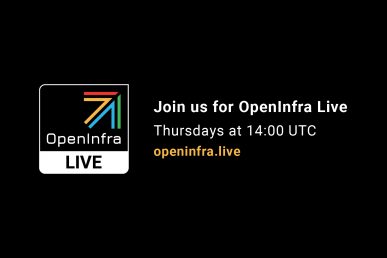Open source projects can only be as strong as their community.
The open source community is made up of a diverse group of individuals all at different experience levels. The Students of OpenInfra Series takes a look into universities and their approach at teaching open source in their curriculum.
Ashley Rodriguez is a senior studying Computer Engineering at Boston University, expecting to graduate in May of 2021. When not studying, she is spending time with her pets at home and trying new recipes in the kitchen.
Check out how Ashely got started working with the OpenStack Manila project as part of her senior design project.
What Open Infrastructure project are you working with and what made you interested in that project, as opposed to some of the other options?
I am working on building support for OpenStack Manila in the OpenStackSDK, as part of my senior design project. I wanted more than just some app or device to present my professors at the end of the year. I wanted to wring out as much experience, skill-building, and networking as possible from whichever project I chose. I got all that and more by working with OpenStack. Though I had used open-source software before, I had never delved into the work behind it, and I’m so glad I decided to dive into the unknown last fall.I am working on building support for OpenStack Manila in the OpenStack SDK, as part of my senior design project. I wanted more than just some app or device to present my professors at the end of the year. I wanted to wring out as much experience, skill-building, and networking as possible from whichever project I chose. I got all that and more by working with OpenStack. Though I had used open-source software before, I had never delved into the work behind it, and I’m so glad I decided to dive into the unknown last fall.
How did you get started?
My onboarding process revolved around getting the ins and outs of installing a local development environment and pushing code to opendev for the first time. I worked with Maari Tamm on a patch for python manila client to get a feel for the coding styles and expectations I would later adhere to when working on future contributions.
What was the hardest part about getting started?
The hardest part about getting started was setting up our virtual development environments. The process itself wasn’t particularly difficult, however, getting the resources to do so was a hurdle we had to jump over several times.
What could have made the getting started process easier?
Getting the right resources at the beginning, in terms of access to virtual machines, would have made the onboarding process much easier. Using university resources like AWS Educate worked for a limited time only. Recently, I’ve been using Vexxhost as we were graciously provided with free accounts from the CEO in January, and it works wonderfully.
How have you contributed to the community?
My senior design team and I created and submitted the spec for Manila Support in OpenStackSDK (https://specs.openstack.org/openstack/manila-specs/specs/release_independent/openstacksdk-manila-support.html) and we have developed the foundations for future contributors. We have worked on and nearly completed the first two priority buckets as identified in the spec.
What’s the biggest benefit from your involvement?
The largest benefit from my involvement with OpenStack is the connections I made here. My mentors were a tremendous help with the learning process, whether it was setting aside the time to help me set up my environment, meeting weekly for pair programming sessions, or offering general advice and information on how the OpenStack community works. They graciously and patiently explained the code we would be working with, and the standards necessary to change or add to it. Without them to guide me throughout the process, my code would have been under review for much longer than it had.
What advice do you have for students who want to get started with open source?
My advice for students who want to get started with open source is to read the documentation for code contribution. There’s a lot of information out there on what tests have to be written, the code style checks you have to pass, and more. And the great thing about open source is that you can see everything! Look through other’s code contributions to see how they write their tests, what naming conventions are they following, what methods are they using., how are they approaching this function. Then take what you see and apply it to your code. Make use of IRC! Don’t be afraid to ask questions.
More about Ashley’s contributions:
I contributed to the python manila CLI repo last year and was listed as one of the contributors for the Wallaby release. I am very proud of that. On Monday, May 3, 2021, the BU Engineering department is hosted ECE day where all the senior students got a chance to show off our projects.
Check out Ashley and her team’s senior design project.
Find Ashley Rodriguez on LinkedIn: https://www.linkedin.com/in/ashley-r-45a426126/
Share your own Students Of OpenInfra story by completing this survey!
- Inside Open Infrastructure: October 2024 - October 2, 2024
- Inside Open Infrastructure: June 2024 - June 18, 2024
- Inside Open Infrastructure: April 2024 - April 3, 2024

)










